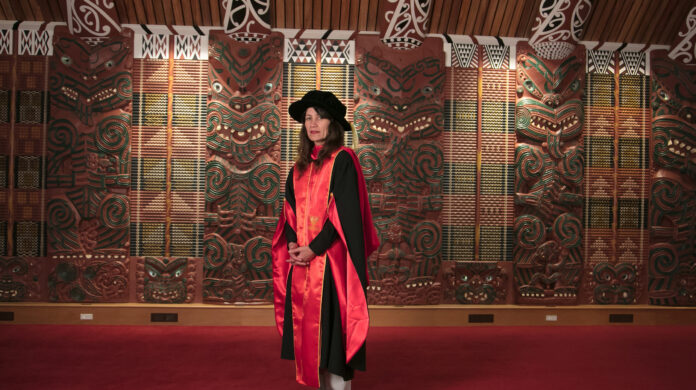Source: MakeLemonade.nz
Otautahi – An Aotearoa world first online gaming platform, which supports indigenous education, will be launched this week and will be free to download on Google and Apple.
The game, Katuku Island, is the upshot of a Māori academic’s masters degree and doctoral research to close the gap for indigenous peoples and to learn how culture can create resilience.
Katuku Island is aimed at indigenous peoples across the globe, from six-year-olds onwards, with the player able to access instant feedback throughout the game. The launch on 22 July will be livestreamed on the Katuku Island Facebook page.
It is an original storyline adapted to a player survival game with an indigenous overlay.
Players must make their way to the only uncontaminated place in the world, Katuku Island. Along the way players must create their player avatars designed to look like Māori warriors with tribal tattoos, design Māori weapons, build tribes and escape the crumbling cities.
Players undertake game challenges, like literacy and decision making. It uses gaming, fun and cultural elements to push the learner to excel in problem solving.
Dr Phyllis Callaghan, of Te Whare Wānanga o Awanuiārangi in Whakatane, and her late husband Matua Craig Callaghan worked in the education sector and committed their lives to Māori education.
Initially this drove them to write a textbook called 16-year-old Māori Boy, which has supported not only Māori youth at school, but also Māori in the justice system, on their educational journey.
Dr Callaghan says that the idea has been constantly evolving and morphed into developing a 3D Indigenous game that supports educational development in literacy, in an environment that signifies Māori and Indigenous cultural codes in all aspects of the game.
“It has allowed an about-face of power and ascertained that students with minimal education can get a second chance at learning. They are able to master cultural talents, which come naturally to them, such as toi (art) or whakairo (carving). These codes had often lain dormant throughout their mainstream education and were overshadowed by negative codes they endured at school, such as racism.
“Māori do not have positive educational statistics. Much of the research tells us that Māori do not fare well in the subject of English, and the gap in the New Zealand schooling systems between Māori students and non-Māori students is widening. Poverty plays a huge part to these statistics. But gains are being made and the environment changing,” Dr Callaghan says.
“The science and data collection became both quantitative and qualitative. Too many times we allow quantitative to be the measurement, but you can’t accurately measure trauma within a mathematical equation, Māori have known that mai rā anō (from long ago).
“The learning journey from Katuku Island could help to unpack past trauma or bad educational experiences and move players forward, creating better social and economic outcomes for themselves.”
All artists and graphic designers who have worked on the design of the characters and visuals for Katuku Island, hail from award winning whakairo programme run out of Tūranga Tane (Gisborne Boys High School).



